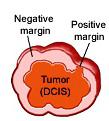 Having a lumpectomy carries the worry that the surgeon will not make the necessary clean margins. The patient then has to go back in for a re-excision.
Having a lumpectomy carries the worry that the surgeon will not make the necessary clean margins. The patient then has to go back in for a re-excision.
The good news…a new device, MarginProbe, may be the answer to reducing the incidence of re-excisions following lumpectomies.
The MarginProbe emits a biomagnetic signal and assesses tissue response to the signal. Cancer cells and normal tissue have different bioelectric signatures, which the device can distinguish. In June an FDA advisory committee recommended that the agency approve the device for clinical use.
Results of a study on the effectiveness of the MarginProbe were presented at the recent Multidisciplinary Breast Cancer Symposium. Susan K. Boolbol, MD, of Brigham and Women’s Hospital in Boston, the primary study investigator, reported at a press briefing in advance of the Multidisciplinary Breast Cancer Symposium.
Dr. Boolbol stated, “Breast-conserving surgery, or lumpectomy, has become the initial treatment for 60% to 70% of women with early breast cancer, including DCIS. Under usual circumstances, the surgical specimen is removed and sent to a pathology lab for assessment, which can take a week or more.
In 20% to 40% of cases, the pathology results show residual tumor cells in or near the surgical margin surrounding the tumor, and the patient has to return to the operating room for a re-excision for removal of more tissue. Even when the pathology report shows clear margins, the patient must endure several days of anxiety awaiting the results.”
Dr. Boolbol summarized findings from the randomized trial conducted at 22 sites in the U.S. and Israel. The study involved 596 women with early-stage breast cancer, including 161 patients with pure DCIS. The investigators randomized the patients to standard pathologic assessment after lumpectomy or to evaluation of tissue specimens in the operating room with the MarginProbe, followed by standard pathologic evaluation.
Patients who underwent surgery and typical pathologic assessment for ductal carcinoma in situ (DCIS) had a re-excision rate of 37% compared with 13% rate of re-excision among women whose surgeons used the MarginProbe to examine tissue in the operating room.
 Having a lumpectomy carries the worry that the surgeon will not make the necessary clean margins. The patient then has to go back in for a re-excision.
Having a lumpectomy carries the worry that the surgeon will not make the necessary clean margins. The patient then has to go back in for a re-excision.
